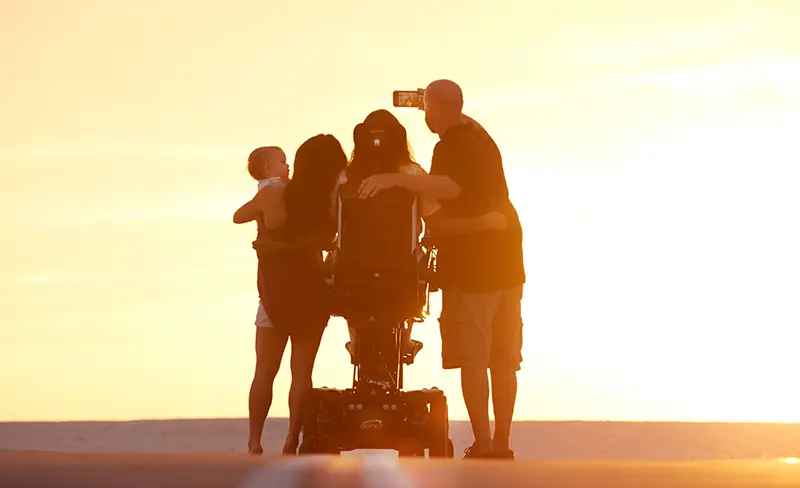In May 2023, after considering the public statements made on the proposed benefit of power seat elevation, the Centers for Medicare and Medicaid Services (CMS) announced that it would fund seat elevation for power wheelchair users. This announcement came after years of advocacy and pressure by the members of the wheeled mobility community. More than 3,600 organizations and individuals have been trying to have power seat elevation reclassified as standard equipment for individuals using complex rehab power wheelchairs. This announcement came with a loud cheer from all those involved and those who will soon benefit from the technology.

Seat elevation, or power adjustable seat height (PASH), allows power wheelchair users to raise or lower their seat height independently, as needed. Unfortunately, for many long-time wheelchair users, this was never an option. For some, the technology has never been introduced to them. For others, it was a non-funded item, so it was never considered. This new ruling has really opened up a new world to many power wheelchair users!
What are some of the benefits of power seat elevation?
- Improves the user's ability to reach for higher items that were once out of reach. Pantry items, medications, and clothing can now be at the user's fingertips.
- Improves functional activities, such as transfers, by allowing the user to align their wheelchair seat to the surface that they are transferring to.
- Improves social engagement with family and friends by being able to make eye contact when speaking to them.
- Improves independence in social and work settings by raising the seat to order a drink at the bar, raising oneself up to see over standing concertgoers, speaking at a podium, etc.
- Helps with reducing neck pain from constantly looking up.
- Improved psychosocial benefits by being at an equal height to peers.
If these benefits appeal to you, it may be time to consider power seat elevation. Since this is considered complex rehab technology (CRT), CMS requires that an assistive technology practitioner (ATP) be involved in the ordering process. CMS also requires that a specialty evaluation for mobility be completed by a licensed/certified medical professional such as an occupational therapist (OT) or physical therapist (PT). The therapist will also be required to complete all the necessary documentation needed to justify the addition of power seat elevation. Additional requirements and documentation will be needed to be completed by a referring physician. The process is quite complicated, so working with seasoned professionals will help to make it go smoothly.
In addition to a specialty evaluation, CMS determined that power seat elevation is reasonable and necessary for individuals using complex rehab power wheelchairs when one of the following applies:
- The individual performs weight-bearing transfer to/from the power wheelchair while in the home. Transfers may be accomplished with or without caregiver assistance and/or the use of assistive equipment (e.g., sliding board, cane, crutch, walker, etc.).
- The individual requires a non-weight-bearing transfer (e.g., a dependent transfer) to/from the power wheelchair while in the home. Transfers may be accomplished with or without a floor lift or mounted lift.
- The individual performs reaching from the power wheelchair to complete one or more mobility-related activities of daily living (MRADLs) such as toileting, feeding, dressing, grooming, and bathing in customary locations within the home. MRADLs may be accomplished with or without caregiver assistance and/or the use of assistive equipment.
This technology is something that you want to try before ordering. Ask your ATP to provide a demonstration model for you to try. As with all CRT, it is helpful to work with professionals who are familiar with the technology and can assist you during the trial. Working with an ATP and a seating & mobility therapist will go a long way in the assessment and justification process. However, YOU are the leader of the team and can best express the reasons you believe you could benefit from power seat elevation.
This exciting news shows what can be accomplished when the wheeled mobility community comes together and individuals fight for the benefits that improve their quality of life.
Learn more about power seat functions on QUICKIE chairs.
References
- A clinical perspective on power seat elevate. Sunrise Medical. (n.d.). https://www.sunrisemedical.com/education-in-motion/blog/october-2020/a-clinical-perspective-on-power-seat-elevate
- Resna position on the application of - 0201.nccdn.net. (n.d.-b). https://0201.nccdn.net
- Seat elevation systems as an accessory to power wheelchairs (group 3). CMS.gov Centers for Medicare & Medicaid Services. (n.d.). https://www.cms.gov/medicare-coverage-database/view/ncacal-decision-memo.aspx?proposed=N&ncaid=309
About the Author
Linda Bollinger-Lunger is a dedicated physical therapist and ATP (Assistive Technology Professional) with a lifelong commitment to improving the lives of individuals who rely on wheelchairs for mobility. Throughout her career, Linda has focused on working in seating and mobility clinics, where she has honed her expertise in assisting people with disabilities to find the most suitable solutions for their unique needs.
Most of the stories here on LiveQuickie.com were submitted by readers. Do you have a story to tell? We'd love to hear it. Submit your story here.